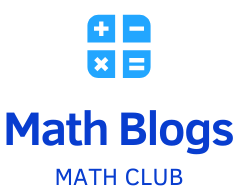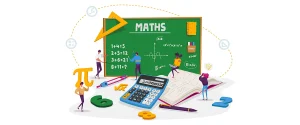Math Software for Teachers – Enhance Classroom Learning To the students, learning math is no longer as hard as it used to be. The justification behind it is the software, which students can use independently. It promotes active thinking as well as productive struggle instead of rote learning or simple factual testing. By the software and instruction, students are able to relate abstruse concepts to other real-life applications and represent these ideas visually. There are numerous graphic aids ranging from manipulatives, to graphing computer programs, to drawing geometric shapes and freehand drawing. These aids allow students to play around with mathematical concepts and relate them to real-life scenarios. 1. Real-World Applications Make Math Visual As it has been highlighted throughout the list of articles, making learning visual is key in learning. As math is a hard section, teachers should look into software that enables learners to explore concepts such as graphs, tables and functions. For example, spreadsheet programs and graphing programs allow students to record numerical data and convert it into a variety of visual displays such as bar, pie and line graphs. This makes it easier for students to identify and interpret relationships such as greater-than/less-than, positive correlations, normal curves and linear regressions.
Other programs offer virtual manipulatives as aids for students to help them visualise concepts like the quadratic equation of geometry shapes. Such tools allow learners to take situated action rather than rote actions and comprehend the “why” behind various formulae, shapes, and principles of physics.
Engaging students through math is possible in other contexts as well. For instance, explaining the use of math in various professions like science, engineering, and finance helps instil a sense of purpose in students towards their education. On the other hand, students can learn how to use mathematics for budgeting in starting their own businesses, tracking savings accounts, and understanding interest rates.
Some programs allow the creation of online collaborative communities where students can discuss their math work with teachers. These can be structured as forums that provide a teacher with the ability to answer students’ questions directly and have students work together to explore data sets or challenging problems.
2. Visual Learning
Teachers may utilize applications to assist with students’ learning comprehension. The five types of taxonomy – general, specific, environment, review and practice, and communication – provoke teachers to reflect about their beliefs concerning students’ learning experiences and interactions with software (Gerjets & Scheiter, 2003).
General software targeting mathematics allows students to work with a wide variety of topics. It often is not difficult to evaluate against a predetermined set of content objectives and is adaptable to students needs over time.
Visual learners benefit from seeing information presented in many different formats. They are able to grasp complicated ideas by observing images that include diagrams, maps and complex concept images. Relationships or differences between various concepts or sets of data can be illustrated through charts, and videos capture motion to explain complex concepts with sound.
Effective software in mathematics helps to develop the students’ ability to communicate with each other and among themselves. The best example are programs that have a chat window. Students can interact on the chat window and discuss ideas on how to tackle various problems. In addition, students are able to give feedback to one another. The best math software provides hints to the students and instructs them to try to solve the problem again after making an error. As an illustration, Geogebra has been found to provide numerous opportunities for students to correct their mistakes by, for example, illustrating the difference between the graph of a quadratic function and its equation.
3. Interactive Whiteboards
An interactive whiteboard is more than a mere projector screen; it is a collaborative tool that maximizes student participation. For instance, it allows students to work together in groups to complete group assignments and find solutions to problems. Teachers can pose various questions to the students, where they can attempt to bias the discussion towards the suggested solution.
The specialized pens that are used with interactive boards come with a multitude of digital features aimed at enabling lessons to become more fun and educational. Some of the most important tools are the virtual ruler, protractor, and compass because they allow students to draw and solve math problems. Other tools let them zoom on pictures or highlight line by line text.
Some interactive whiteboards have a direct connection to the internet, which makes it easier for students to look up information and video clips. If there is a lesson on history, the teacher can include videos and pictures of other historical events to demonstrate the topic.
Another advantage is the ability of interactive whiteboards to record presentations for students to review during study sessions. This feature is great for students with learning disabilities because it enables them to understand the material better by reviewing it in their own time and at their pacing. Furthermore, it helps them to get ready for surprises, tests, and quizzes.
4. Data Analysis
To enhance student learning educators require a range of math resources and tools which include interactive lessons, collaboration tools and digital manipulatives to support different pedagogical methods. Also, these teachers need training programs that will enable them to see and use these tools in different classroom contexts.
Also, software tools that support formative evaluation allow the teacher to assess and analyze student work in progress and use this information to adjust classroom instructions immediately. In this way, students can become better masters of the topics and can be more creative and flexible in their problem solving approaches.
Educational communication software is another example that allows students to talk about math problems and other issues with their peers, other faculty members, or even their teachers. This allows students to be able to ponder over problems in depth that is not possible in intra-class debates and gives the chance to interact with teachers and other students from different contexts than the confines of the classroom (Kurz, 2004).
Additional examples of assistive technology cover math programs that facilitate online cooperative learning, automated grading, and other resources for the students. Such resources comprise of a word problem generator, graphing calculators, and tests in the form of a computer quiz. These resources are accessible on computers, tablets, and mobile devices, and most are available offline for students living in areas with limited Internet coverage.




